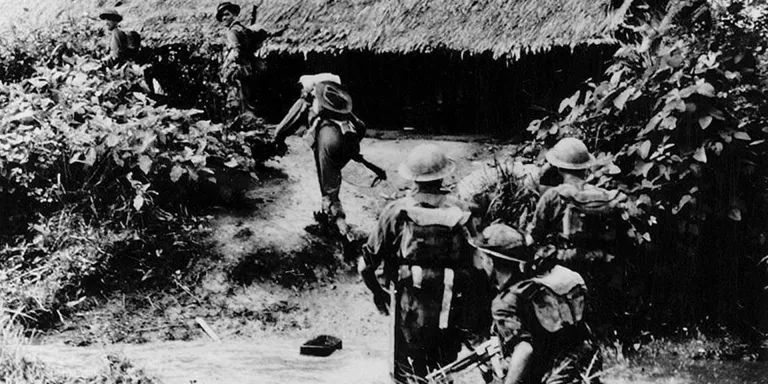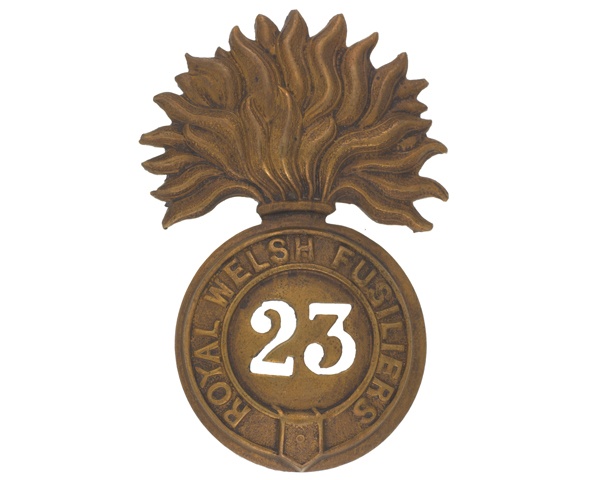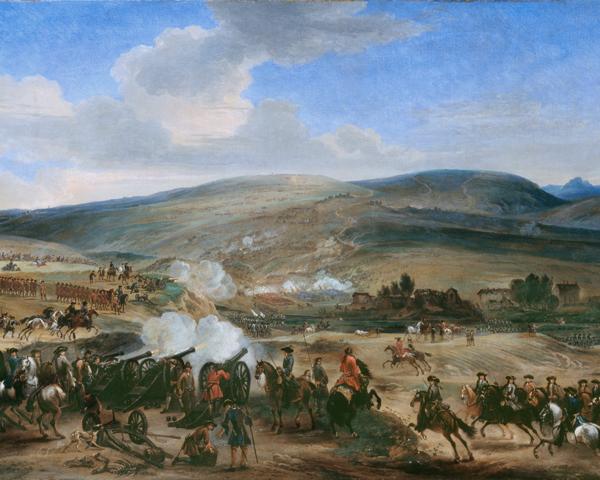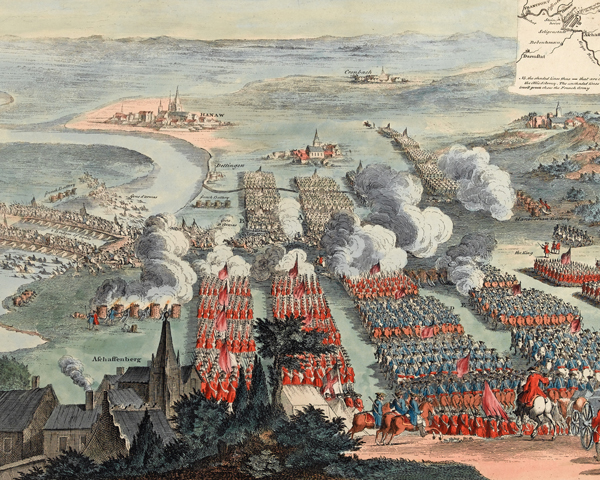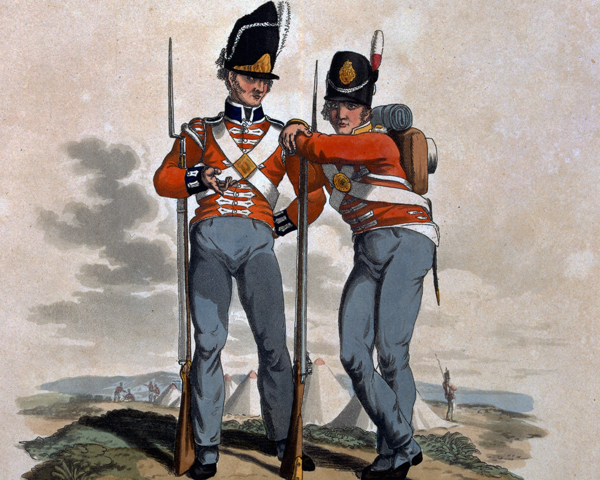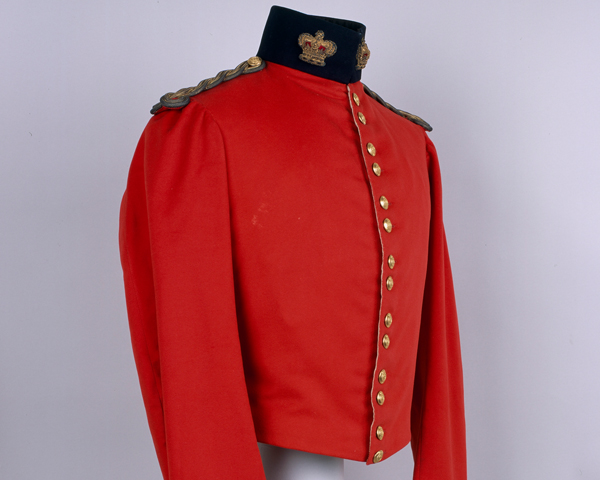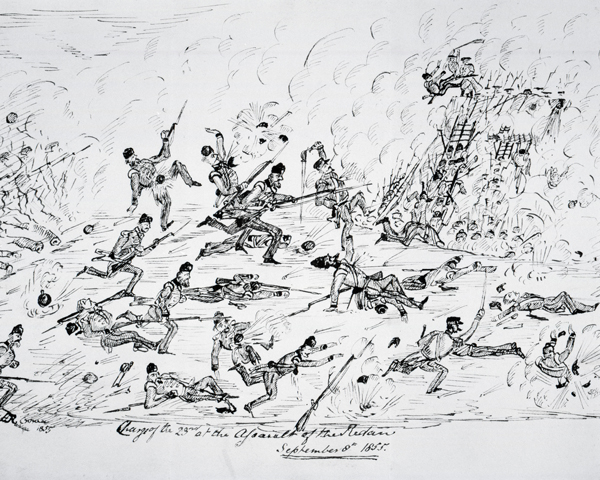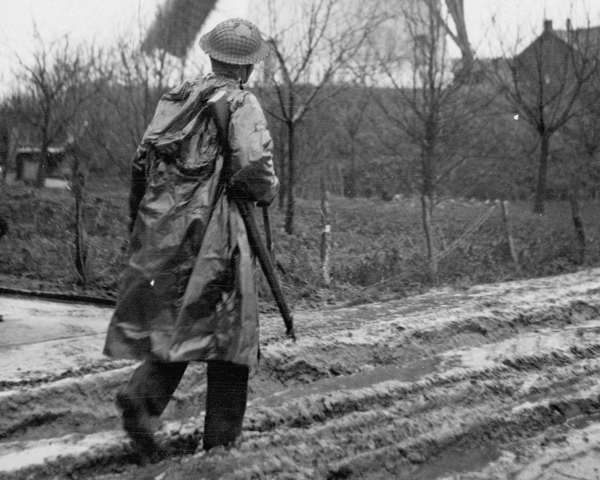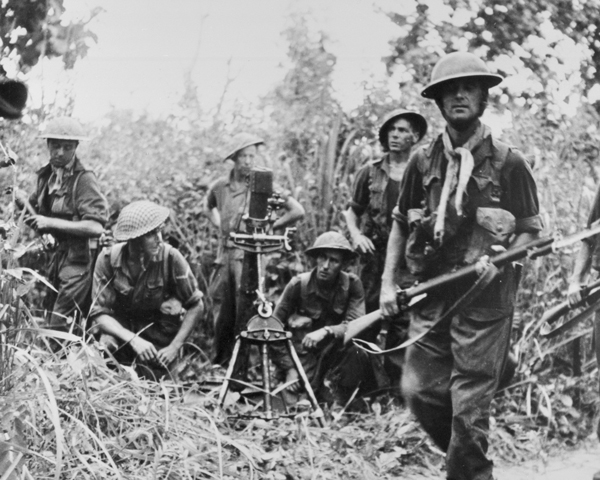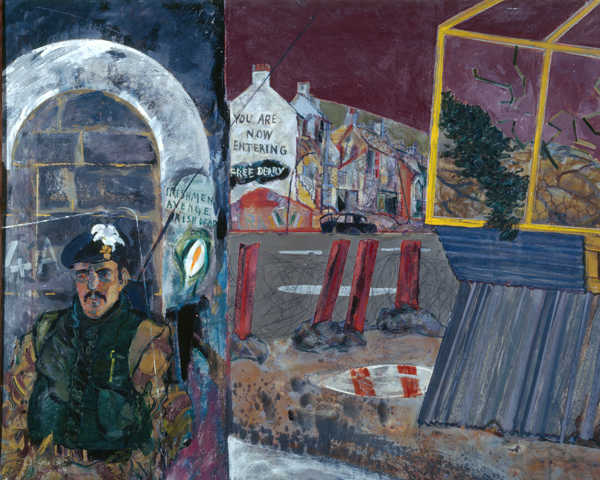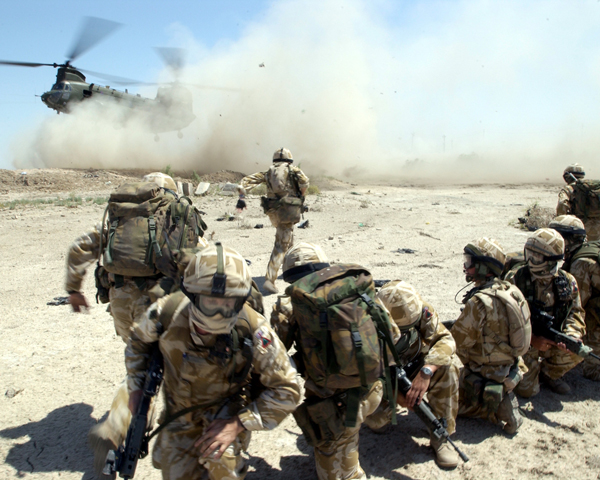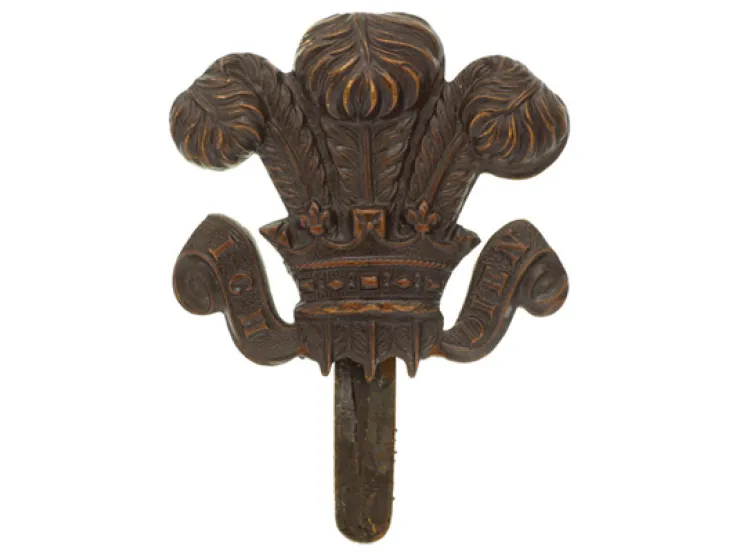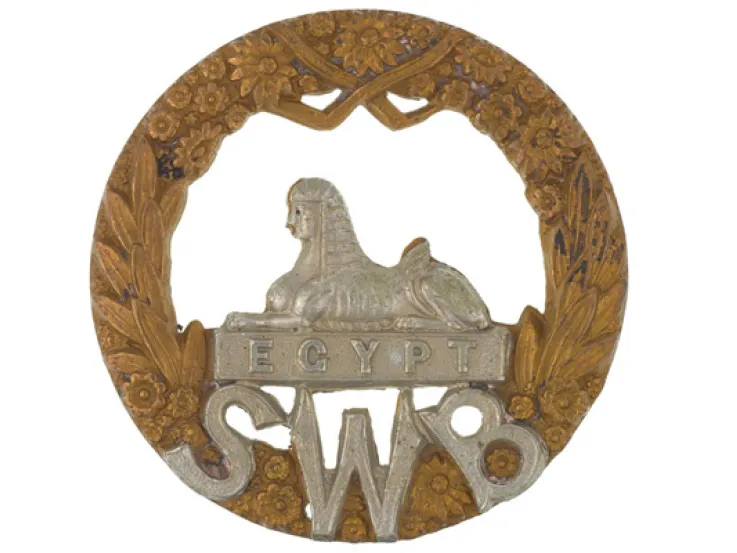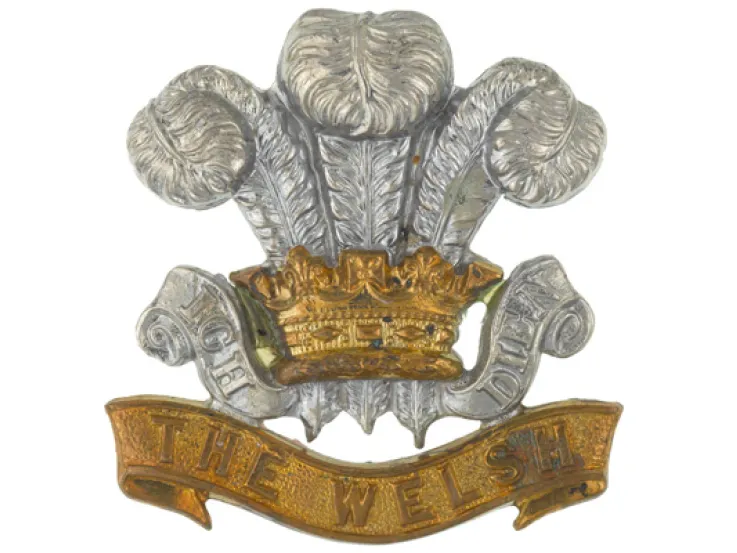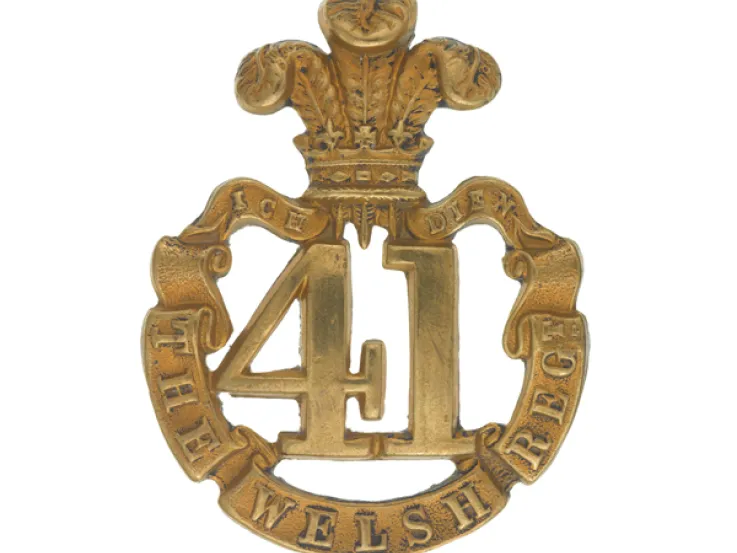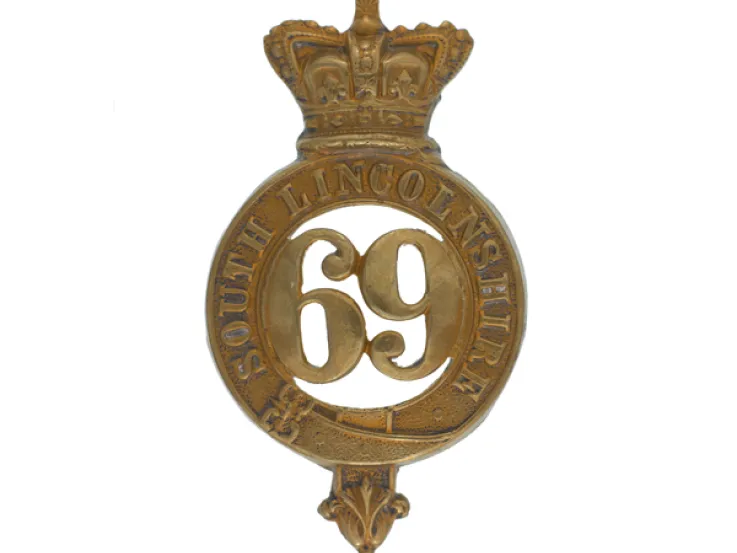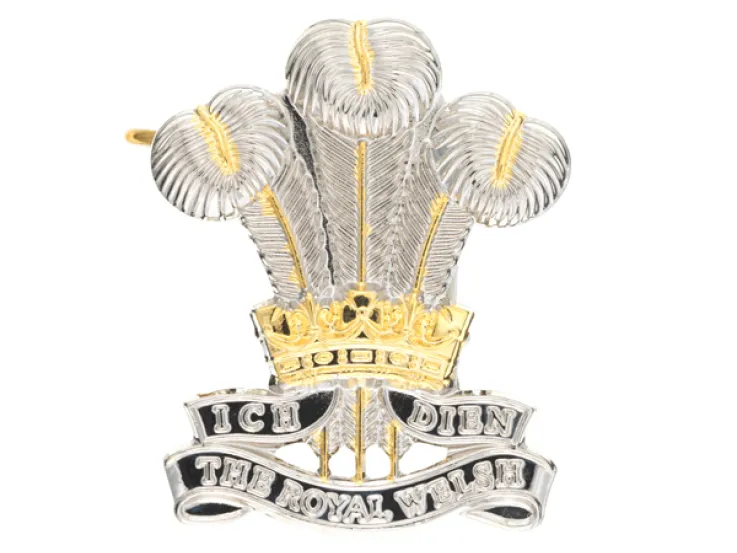2nd Battalion The Royal Welch Fusiliers at the capture of Pintha in Burma, 1944
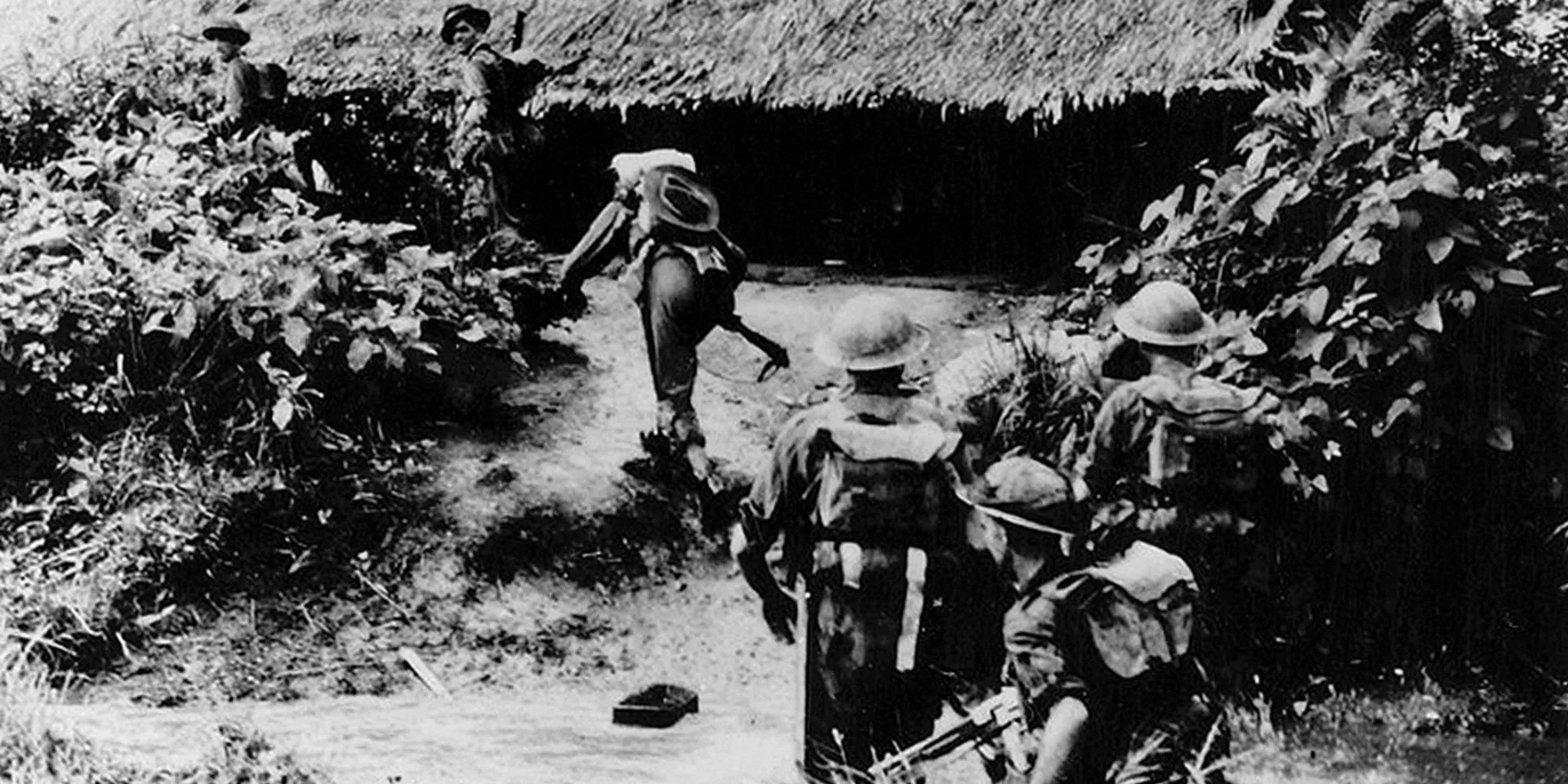
Origins
This unit was raised by Lord Henry Herbert at Ludlow in the Welsh Marches in March 1689. It was created to help fight in Ireland against James II, the recently deposed king. First seeing action at the Battle of the Boyne (1690), it also fought at Athlone (1691) and Aughrim (1691). It then embarked for Flanders, where it served at Namur (1695).
Thirteen years after its inception, it was one of the earliest regiments to be honoured with a fusilier title, becoming known as The Welch Regiment of Fuzilieers. It was also one of the oldest regiments in the Army, hence the archaic spelling of the word 'Welch' instead of 'Welsh'.
Other ranks' glengarry badge, The Royal Welch Fusiliers, c1874
The Battle of the Boyne, 1690
18th-century wars
The regiment was granted the prefix 'Royal' in 1713 for its actions in the War of the Spanish Succession (1702-13), which included Blenheim (1704), Ramillies (1706) and Malplaquet (1709). From 1713 until 1742, it garrisoned England, Scotland and Ireland.
During the War of the Austrian Succession (1740-48), it fought at Dettingen (1743) and Fontenoy (1745), before returning home to oppose the Jacobites, serving at Culloden in 1746. It was back on the Continent the following year, and fought at Lauffeld (1747). In 1751, it was re-titled as the 23rd Regiment of Foot (Royal Welsh Fuzileers).
The regiment embarked for Germany in 1758 for service in the Seven Years War (1756-63). It fought at Minden (1759), Warburg (1760), Kloster Kampen (1760) and Wilhemsthal (1762).
The Battle of Dettingen, 1743
A soldier of the 23rd Regiment of Foot (left), 1812
Revolutionary and Napoleonic era
During the American War of Independence (1775-83), the regiment served in many engagements. These included Bunker Hill (1775), Guilford Court House (1781) and Yorktown (1781), where it was the only British regiment not to surrender its colours. These were smuggled out, tied around an ensign's waist.
It fought in the French Revolutionary Wars (1793-1802), helping capture Santo Domingo (now Haiti) in 1795. It also joined the Anglo-Russian invasion of Holland in 1799, where it fought at Alkmaar (1799). Two years later, it was in Egypt, fighting at Alexandria (1801).
In 1804, the regiment raised a 2nd Battalion. This was the last British unit to leave Corunna in 1809 during the Peninsular War (1808-14). That year, it also took part in the Walcheren Expedition. It was disbanded in 1814.
Meanwhile, 1st Battalion took part in the Hanover campaign (1805) and the attack on Copenhagen (1807), before deploying to the Peninsula in 1810. There, it fought at Albuera (1811), Badajoz (1811), Salamanca (1812), the Pyrenees (1813), Nivelle (1813) and Toulouse (1814). The following year, it took part in the Waterloo campaign (1815).
Shell jacket of Lieutenant-Colonel Chester, 23rd Regiment, c1854
The 23rd Regiment at the assault on the Redan, Sevastopol, 1855
Victorian era
In 1838, 1st Battalion sailed for Canada where, in 1842, it was joined by a newly-raised Reserve Battalion. The following year, 1st Battalion moved to the West Indies and then to England in 1848.
In 1850, the Reserve Battalion lost 33 soldiers and family members when the steamer 'Commerce' collided with another ship and sank on Lake Erie. Three years later, the battalion returned home to be disbanded and amalgamated with 1st Battalion.
A long period of garrison duties at home and abroad followed until the Crimean War (1854-56), where the regiment fought at Alma (1854), Inkerman (1854) and Sevastopol (1855). Four members of the 23rd were among the first recipients of the Victoria Cross.
The regiment also fought in the Second China War (1856-50), before taking part in the relief of Lucknow during the Indian Mutiny (1857-59).
In 1857, the 2nd Battalion was re-formed. It undertook garrison duties across the British Empire over the following five decades, but also fought in Canada during the Fenian Raids of 1866, in the Third Ashanti War (1873-74) and the Boxer Rebellion (1900) in China.
During this period, 1st Battalion also undertook garrison duties, but fought in the Third Burma War (1885-87), the 1891 Hazara Expedition and the Boer War (1899-1902).
As it already had two battalions, the regiment remained intact after the 1881 Army reforms. It continued to recruit from Caernarvonshire, Denbighshire, Flintshire, Merionethshire and Anglesey. However, it was re-titled The Royal Welsh Fusiliers.
A member of the 7th Royal Welch Fusiliers on patrol, 1944
A 2nd Royal Welch Fusiliers mortar crew in Burma, 1944
World Wars
During the First World War (1914-18), 1st Battalion fought on the Western Front and, from 1917, in Italy. 2nd Battalion spent the entire war in France and Flanders. The regiment also raised 34 Reserve, Territorial, Garrison and New Army battalions that served at home and in all the main theatres of war, including Gallipoli and Salonika.
The regiment received eight Victoria Crosses during the conflict. It also had several notable authors among its ranks, including David Jones, Siegfried Sassoon, Robert Graves, and the Welsh-language poet Hedd Wyn, who was killed at Ypres in 1917.
The Second World War (1939-45) saw 1st Battalion serve in France in 1940, before being evacuated from Dunkirk. Two years later, it moved to India and Burma, taking part in the defence of Kohima (1944). 2nd Battalion also served in India and Burma during 1943-45, but also took part in the invasion of Madagascar in 1942.
The regiment raised several other Territorial and Service battalions during the war. These included the 4th, 6th and 7th Battalions, which served in North West Europe in 1944-45.
A soldier of The Royal Welch Fusiliers in Londonderry, 1972
Soldiers of 1st Battalion The Royal Welch Fusiliers, Iraq, 2004
Post-war
The unit was reduced to a single battalion in 1948. For the next two decades, it mainly served in England, Germany and Cyprus .
In 1952, 2nd Battalion was re-formed. This unit went on to serve in the Malayan Emergency (1948-60) from 1954, but was disbanded again in 1957.
The regiment deployed to Northern Ireland in 1972. It returned there 13 times in the following years, undertaking the last emergency tour there by an Army unit in 2005. It also undertook peacekeeping duties in Bosnia in 1995, and deployed to Iraq (2003-11) in 2004.
Legacy
On St David’s Day (1 March) 2006, it was amalgamated with The Royal Regiment of Wales to form The Royal Welsh.
Regimental museums
The National Army Museum works with a network of Regimental and Corps Museums across the UK to help preserve and share the history and traditions of the Army and its soldiers.
Discover more about The Royal Welch Fusiliers by visiting The Royal Welch Fusiliers Museum at Caernarfon Castle and Firing Line Museum at Cardiff Castle.

